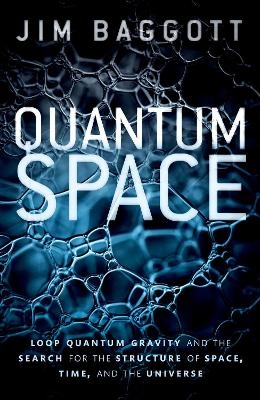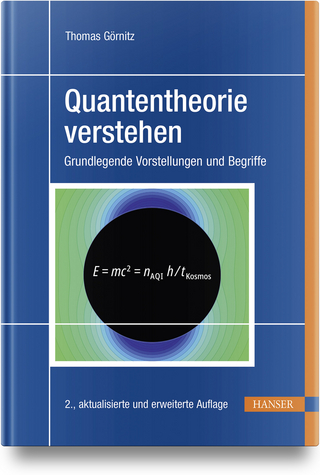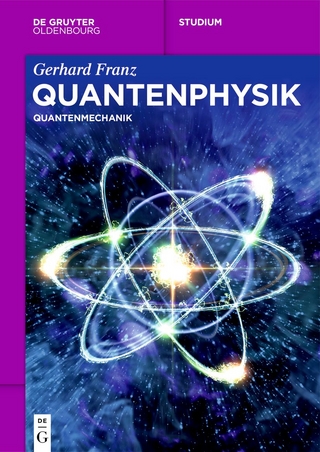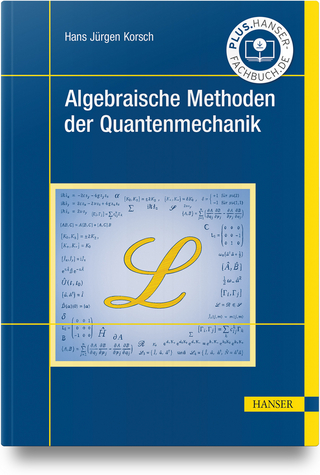
Quantum Space
Oxford University Press (Verlag)
978-0-19-880911-1 (ISBN)
Today we are blessed with two extraordinarily successful theories of physics. The first is Albert Einstein's general theory of relativity, which describes the large-scale behaviour of matter in a curved spacetime. This theory is the basis for the standard model of big bang cosmology. The discovery of gravitational waves at the LIGO observatory in the US (and then Virgo, in Italy) is only the most recent of this theory's many triumphs.
The second is quantum mechanics. This theory describes the properties and behaviour of matter and radiation at their smallest scales. It is the basis for the standard model of particle physics, which builds up all the visible constituents of the universe out of collections of quarks, electrons and force-carrying particles such as photons. The discovery of the Higgs boson at CERN in Geneva is only the most recent of this theory's many triumphs.
But, while they are both highly successful, these two structures leave a lot of important questions unanswered. They are also based on two different interpretations of space and time, and are therefore fundamentally incompatible. We have two descriptions but, as far as we know, we've only ever had one universe. What we need is a quantum theory of gravity.
Approaches to formulating such a theory have primarily followed two paths. One leads to String Theory, which has for long been fashionable, and about which much has been written. But String Theory has become mired in problems. In this book, Jim Baggott describes "the road less travelled": an approach which takes relativity as its starting point, and leads to a structure called Loop Quantum Gravity. Baggott tells the story through the careers and pioneering work of two of the theory's most prominent contributors, Lee Smolin and Carlo Rovelli. Combining clear discussions of both quantum theory and general relativity, this book offers one of the first efforts to explain the new quantum theory of space and time.
Jim Baggott is a freelance science writer. He was a lecturer in chemistry at the University of Reading but left to work with Shell International Petroleum Company, and then as an independent business consultant and trainer. His many books include Quantum Reality: The Quest for the Real Meaning of Quantum Mechanics – A Game of Theories (OUP, 2020), Mass: The Quest to Understand Matter from Greek Atoms to Quantum Fields (OUP, 2017), Origins: The Scientific Story of Creation(OUP, 2015), Higgs: The Invention and Discovery of the 'God Particle' (OUP, 2012), The Quantum Story: A History in 40 Moments (OUP, 2011), and A Beginners Guide to Reality (Penguin, 2005).
PrefaceProloguePart I: Foundations 1: The Laws of Physics are the Same for Everyone 2: There's No Such Thing as the Force of Gravity 3: Why Nobody Understands Quantum Mechanics 4: Mass Ain't What it Used To Be 5: How to Fudge the Equations of the UniversePart II: Formulation 6: To Get There I Wouldn't Start From Here 7: A Gift From the Devil's Grandmother 8: Our Second or Third Guess Solved the Equations Exactly 9: I Used Every Available Key Ring in Verona 10: Is There Really No Time Like the Present?Part III: Elaborations 11: Gravitons, Holographic Physics and Why Things Fall Down 12: Fermions, Emergent Particles and the Nature of Stuff 13: Relational Quantum Mechanics and Why 'Here' Might Actually be 'Over There' 14: Not With a Bang: the 'Big Bounce', Superinflation and Spinfoam Cosmology 15: Black Hole Entropy, the Information Paradox and Planck Stars 16: Close to the Edge: The Reality of Time and the Principles of the Open FutureEpilogue: A Few Questions, and Some AnswersEndnotesGlossaryBibliography
| Erscheinungsdatum | 22.10.2018 |
|---|---|
| Zusatzinfo | 30 black and white images |
| Verlagsort | Oxford |
| Sprache | englisch |
| Maße | 162 x 238 mm |
| Gewicht | 711 g |
| Themenwelt | Kunst / Musik / Theater ► Allgemeines / Lexika |
| Sachbuch/Ratgeber ► Natur / Technik | |
| Naturwissenschaften ► Physik / Astronomie ► Quantenphysik | |
| ISBN-10 | 0-19-880911-5 / 0198809115 |
| ISBN-13 | 978-0-19-880911-1 / 9780198809111 |
| Zustand | Neuware |
| Haben Sie eine Frage zum Produkt? |
aus dem Bereich


